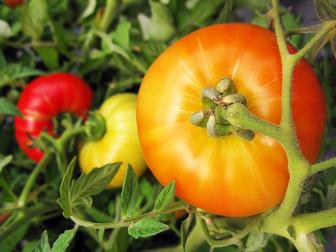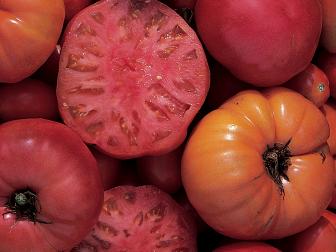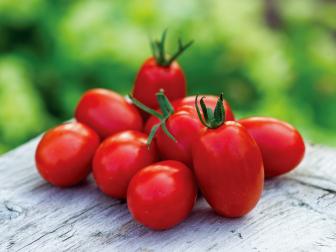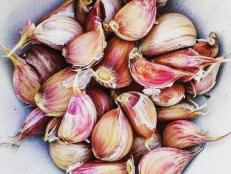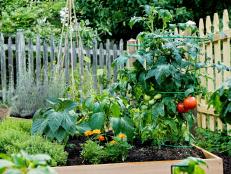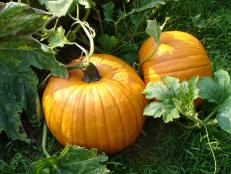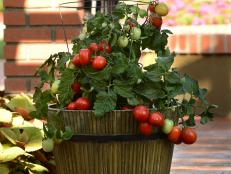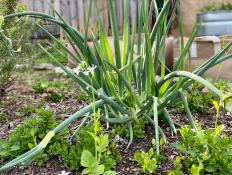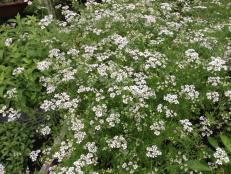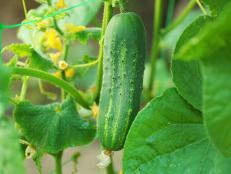How to Stop Tomato Blossom End Rot
Got an ugly black spot on the bottom of your tomatoes? Never fear. It's a common problem that's easier to fix than you might think. HGTV expert Gayla Trail, of YouGrowGirl.com, offers advice.
QUESTION: My heirloom tomatoes are starting to ripen but they have ugly black spots on the bottom. What is going on? Can I still eat the good parts and just cut off the spot?

Jean Faucett / Shutterstock.com
A sunken black spot at the blossom end of tomato fruits is the classic symptom of blossom end rot. This relatively common garden problem is not a disease, but rather a physiological disorder caused by a calcium imbalance within the plant.
ANSWER:
Sounds like your tomatoes have a case of blossom end rot, a very common condition that is caused by a calcium deficiency that leads to disfiguration of developing fruit. In general, the condition is not caused by a lack of calcium in the soil, so calcium amendments and sprays won't really fix the problem.
Instead, blossom end rot in tomatoes happens when the plant is unable to take up the calcium that is already in the soil due to too much or too little water, such as from drought, heavy rainfall, or an erratic watering schedule.
Do not despair. A lot of gardeners (myself included) have found themselves in your position. Keeping plants happy through extremes is a struggle, and one that is made worse if you are growing in pots.
Fortunately, blossom end rot is not a viral, bacterial or fungal issue — you still have plenty of time to turn things around and produce beautiful tomatoes with a bit of due diligence. Focus on getting the plants regular, even water, using the tips below.
And to answer your second question: Yes you can cut off the rot and eat what’s left of the fruit — it won’t kill you or make you sick. However, I find that the remaining fruit tends to be mealy and poor quality. If you do eat it, do so right away; do not try to can or preserve it.
How to Plant, Grow and Care for Tomatoes
Consider this your ultimate guide to choosing tomato plants, planting, growing and caring for tomatoes, and harvesting the best-tasting tomatoes ever.
More Solutions to Tomato Troubles
12 Tomato Tricks and Tips 13 Photos
Separate fact from fiction with tried-and-true tomato growing tips.
What’s Wrong With My Tomato? 15 Photos
Get the scoop on common tomato issues—along with tips to make things right.
How to Water Tomatoes
Tomato plants are thirsty creatures and their thirst only increases as they begin to set fruit. The trick to keeping them happy is to water deeply, but infrequently. This means that rather than sprinkling or pouring a little water on everyday, it is better if you give them a really good, long soak right at the soil line every few days, more or less, depending on growing conditions.
Tomatoes grown in containers generally need to be thoroughly drenched every single day, especially during a heat wave when the soil dries faster than the roots can soak up the water. I give mature, potted tomatoes that are in the fruiting stage roughly four liters, or one gallon, of water daily during the hottest days of summer. Administer it slowly rather than all at once so that the soil has a chance to rehydrate.
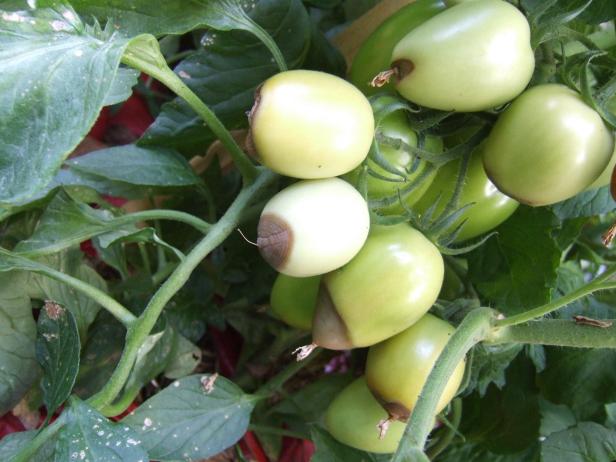
Julie Martens Forney
Several of the developing tomato fruit on this plant are suffering from blossom end rot. The best action here is to remove the affected fruit and follow good watering practices to allow the rest of the fruit a chance to develop properly. Julie Martens Forney, who took this photo in her garden, sometimes recommends calcium sprays and amendments for a short-term fix but in the long run, she recommends a soil test of your garden soil before planting again next year.
Tips and Tricks
If you’re having a hard time keeping up with watering demands, I suggest employing a few if not all of the DIY waterwise techniques I have outlined here.
- Mulch: Over the long term, mulch will help to improve the soil content over time, which can lead to better water absorption and retention. In the short term, it will prevent the sun from heating up the soil and drying it out quickly before you’ve had a chance to water.
- Drip Irrigation: In the event of extreme heat, drip irrigation will help keep the soil from becoming completely bone dry.
- The Bag-of-Water Trick: If you have to go away for a day or two, fill up bags with water and secure them closed. Poke tiny holes into the bottom of each bag with a pin and set them down onto the soil surface around the plant. Instant, and free drip irrigation!
Note: Blossom end rot can also occur on peppers, squash, including zucchini, and eggplant; use the same watering advice above to stop end rot on those crops, too.
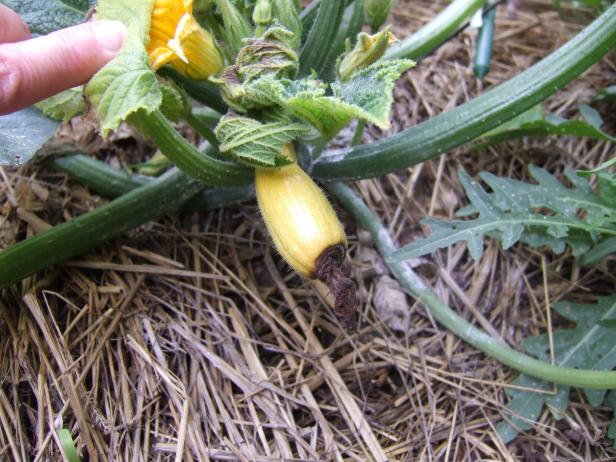
Julie A. Martens
Those darken, sunken spots on the very bottom of this squash are blossom end rot.






